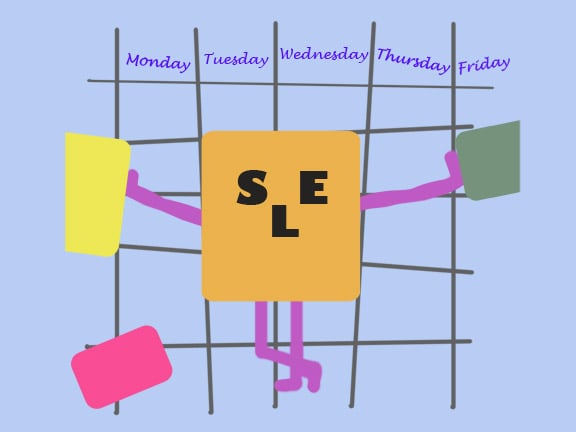Despite concerns about impact from the Faculty Senate’s recent decision to substantially reduce freshman requirements, officials expect little immediate change in Structured Liberal Education (SLE) programming.
“Very little will change in the content of the program,” emphasized Professor Carolyn Chappell Lougee, director of SLE.

Starting next year, the program unit count will be reduced from nine units in the fall and winter quarters and ten units in the spring quarter to eight units each quarter. Otherwise, despite faculty concerns that reduced requirements for non-SLE students would diminish the appeal of SLE, the program’s current model will be continued.
“We asked ourselves whether we should change anything in the content of the year, and we just think that it’s running so beautifully,” Chappell Lougee said. “We don’t want to change anything preemptively. We really do have a lot of confidence that this is going to continue to be attractive to incoming students. We’ll see if our confidence is borne out.”
In Faculty Senate discussion and in speaking with The Daily, Chappell Lougee expressed adamant opposition to the decision to remove a freshman seminar requirement, arguing that the further-diminished requirements would constitute an inadequate introduction to university-level education.
“One of the things that the yearlong freshman humanities requirement has done for more than 30 years…is focus on skills development for the freshmen and prepare them to go on to more advanced work,” Chappell Lougee said. “That simply can’t be done at the same level in one course. I think we’re going to see our students have a more difficult time coming up to university level.”
However, Chappell Lougee argued that the diminished requirements will ultimately increase the importance of SLE within the University’s pedagogical structures.
“SLE is now the structured option in the freshman year,” Chappell Lougee said. “Stanford as an institution is strengthened by offering both kinds of entry — structured and unstructured. I think it would be a real problem for Stanford if we didn’t have a SLE…if it were just all ‘come and jump in with both feet and find your own way, see if you can swim.’”
Lanier Anderson, chair of the Study on Undergraduate Education at Stanford (SUES) sub-committee on the Freshman Year, called SLE a “more intense way of fulfilling” freshman requirements, but expressed concern about the future of SLE with the reduced requirements.
SLE is currently equivalent in units to all three quarters of the Introduction to the Humanities (IHUM) program, both quarters of the Program in Writing and Rhetoric (PWR) and a humanities distribution requirement.
“That will no longer be true under the new Senate decision about the requirements,” Anderson said. “It wouldn’t have been true even under what we proposed with SUES. A lot of the curricular economic effects of the new system will depend on what breadth requirements pass the Senate and how those interact with SLE.”
“I think it will inevitably be true [that] in the new environment, SLE will be more of an extra investment,” Anderson added. “It was our bet on the committee that this wouldn’t really damage SLE as a program because we thought that the population going into SLE was looking to make an extra investment, and wouldn’t be dissuaded by the fact that it was a little more extra.”
Anderson noted that the further reduced requirements would mean an even wider gap in the investment required by SLE students, something he called an “unfortunate side effect.”
Overall, however, both Anderson and Chappell Lougee expressed optimism about SLE’s future, with Anderson noting that SLE functioned effectively in the past even in the absence of any freshman requirement at all.
“The SUES process revealed there are a lot of faculty members who are committed to the idea of dedicated freshman education, and I think that those faculty members will be encouraged to keep contributing to programs like SLE by the fact that the Senate approved a less robust general requirement than SUES originally proposed,” Anderson said.
Anderson added that the institutional support for the SLE program continues to be strong.
“We were excited about SLE as a model,” Anderson said. “Some members of the committee were cautious about whether we could preserve what’s great about SLE while scaling it up to the entire freshman class, although there was temptation to replace freshman learning with something like SLE. Because these people were cautious, the recommendation was that Stanford could, and we should, expand the residential part of the SLE model in a little bit of a piece-meal way.”
“The SUES committee…suggested the creation of additional ‘integrated learning environments’ (ILEs) for freshmen on different themes,” wrote Sharon Palmer ‘90, associate vice provost for undergraduate education, in an email to The Daily. “These would not be a universal structure for all freshmen, but rather additional options for entering students. Like SLE, such programs would likely fulfill multiple general education requirements.”
Chappell Lougee noted that before the SUES report was released, two new programs were already being crafted for introduction in fall 2013.
“One of them will be the World on Art, which is an arts-rich program, located in the dorm. The other is going to be Cultures of Knowledge, so it’s going to be a kind of history of science, a crossover between humanities and sciences,” Chappell Lougee said. “Both of those are going to be very exciting.”
